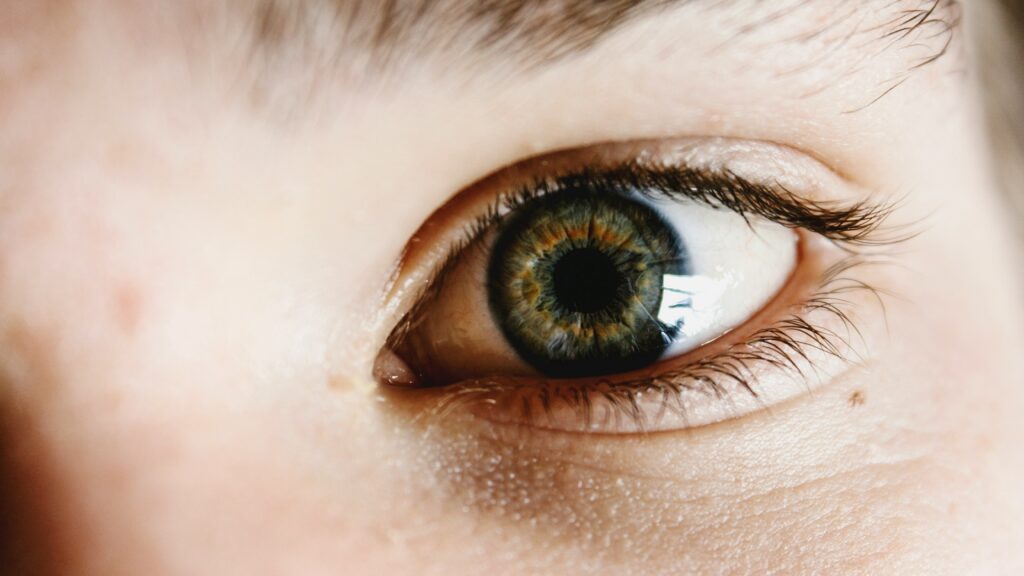Your cart is currently empty!

What Is Glaucoma? A Guide to Symptoms, Risks, and Treatments

Did you know that glaucoma is one of the leading causes of blindness worldwide? Often referred to as the “silent thief of sight,” this condition can develop without any noticeable symptoms until significant vision loss has occurred. It’s a sobering reality but one that underscores the importance of awareness and early detection.
Glaucoma is a group of eye diseases that damage the optic nerve, often due to increased pressure in the eye. If left untreated, it can lead to irreversible vision loss. The good news? With regular eye exams and timely treatment, it’s possible to slow its progression and protect your sight.
In this post, we’ll explore what glaucoma is, its symptoms, risk factors, and the treatment options available to help manage this condition. By understanding the facts, you can take proactive steps to safeguard your vision and support others in doing the same.
What is Glaucoma?
Glaucoma is a group of eye diseases that damage the optic nerve, the part of the eye responsible for transmitting visual information to the brain. This damage is often caused by increased pressure within the eye, known as intraocular pressure, though glaucoma can sometimes occur even when eye pressure is normal.
Often referred to as the “silent thief of sight,” glaucoma progresses slowly and typically without noticeable symptoms in its early stages. This makes it particularly dangerous, as many people may not realize they have it until significant vision loss has occurred. Without early detection and treatment, glaucoma can lead to irreversible vision impairment or blindness.
Glaucoma can affect people of all ages, but it is most commonly found in older adults. There are several types of glaucoma, including open-angle glaucoma, which is the most prevalent form, and angle-closure glaucoma, which is less common but can cause sudden and severe symptoms.
Understanding glaucoma is the first step toward protecting your vision. Regular eye exams and early detection are crucial for preventing long-term damage and maintaining eye health.

Glaucoma Symptoms
Glaucoma is often called the “silent thief of sight” because it can progress without any obvious symptoms, especially in its early stages. For many, vision loss occurs gradually, making it difficult to notice until significant damage has been done. Understanding the symptoms of glaucoma is crucial for early detection and treatment.
Early Symptoms of Glaucoma
- In the early stages, most individuals do not experience any noticeable symptoms. This is why regular eye exams are so important, especially for those at higher risk.
Symptoms of Advanced Glaucoma
As glaucoma progresses, it may cause noticeable changes to your vision, including:
- Loss of Peripheral Vision: A gradual narrowing of the field of view, often described as “tunnel vision.”
- Seeing Halos Around Lights: Rings of light around bright objects, especially in low-light conditions.
- Blurred Vision: Difficulty focusing or a hazy quality to sight.
- Eye Pain or Discomfort: This can range from mild aching to severe pain, particularly in cases of angle-closure glaucoma.
- Redness in the Eye: Accompanied by other symptoms, it can indicate increased eye pressure.
- Headaches or Nausea: These symptoms often accompany acute cases of angle-closure glaucoma.
When to Seek Help
If you experience any of these symptoms, it’s important to seek medical attention promptly. Sudden symptoms, such as severe eye pain, blurred vision, or halos around lights, could indicate an acute attack of angle-closure glaucoma, which is a medical emergency.
Why Regular Eye Exams Matter
Since glaucoma often develops silently, regular eye exams are the best way to catch it early. Comprehensive eye exams include tests for intraocular pressure and a detailed evaluation of the optic nerve, allowing your eye doctor to detect early signs before symptoms appear.
Being aware of these symptoms and prioritizing eye health can make all the difference in preserving your vision. Early detection and treatment are key to managing glaucoma effectively.
Risk Factors for Glaucoma
While glaucoma can affect anyone, certain factors can significantly increase the likelihood of developing this condition. Understanding these risk factors is crucial for early detection and prevention, particularly for those in higher-risk groups.
Age
The risk increases with age, particularly for individuals over 60. For some populations, such as African Americans, the risk may rise as early as age 40.
Family History
Glaucoma often runs in families. If a close relative, such as a parent or sibling, has been diagnosed with glaucoma, your risk of developing the disease is significantly higher.
Medical Conditions
Certain health conditions are associated with an increased risk of glaucoma, including:
- Diabetes: High blood sugar levels can affect eye pressure and overall eye health.
- Hypertension: Elevated blood pressure may contribute to optic nerve damage.
- Heart Disease: Poor circulation can impact the health of the optic nerve.
Race and Ethnicity
Glaucoma is more prevalent in certain populations:
- African Americans: At higher risk of developing glaucoma and experiencing more severe vision loss.
- Hispanics: Particularly at increased risk after the age of 60.
- Asian Populations: More susceptible to angle-closure glaucoma.
Eye Conditions and Trauma
- High Intraocular Pressure (IOP): Elevated eye pressure is one of the primary risk factors for glaucoma.
- Previous Eye Injuries: Trauma to the eye can increase the risk of glaucoma, sometimes years after the injury.
- Thin Corneas: Associated with higher susceptibility to optic nerve damage.
Long-Term Use of Corticosteroids
Prolonged use of corticosteroid medications, especially in eye drops, can raise intraocular pressure and increase the likelihood of developing glaucoma.
If you fall into any of these high-risk groups, it’s essential to schedule regular eye exams. Early detection through comprehensive testing can identify glaucoma in its earliest stages when treatment is most effective. By understanding and addressing these risk factors, you can take proactive steps to protect your vision.

Glaucoma Treatment Options
While glaucoma cannot be cured, early diagnosis and treatment can slow or prevent vision loss, preserving quality of life. The primary goal of treatment is to reduce intraocular pressure (IOP), which helps protect the optic nerve from further damage. Here are the main treatment options available:
Medications
Medications, often in the form of prescription eye drops, are the most common first-line treatment. They work by either reducing the production of fluid in the eye or improving its drainage to lower intraocular pressure.
- Types of Eye Drops: Beta-blockers, prostaglandins, alpha agonists, and carbonic anhydrase inhibitors.
- Importance of Adherence: Consistently using prescribed eye drops is crucial for controlling glaucoma effectively.
Laser Therapy
Laser treatments can help improve fluid drainage or reduce fluid production in the eye. These procedures are minimally invasive and often used when medications alone are not sufficient.
- Selective Laser Trabeculoplasty (SLT): Enhances drainage in open-angle glaucoma.
- Laser Iridotomy: Creates a small opening in the iris to relieve pressure in angle-closure glaucoma.
- Cyclophotocoagulation: Reduces fluid production in the eye.
Surgery
For advanced cases where medications and laser treatments are not effective, surgical options may be necessary:
- Trabeculectomy: Creates a new drainage channel for fluid to leave the eye.
- Drainage Implants: Tiny devices are placed in the eye to help drain excess fluid.
- Minimally Invasive Glaucoma Surgery (MIGS): Newer techniques with faster recovery times and fewer risks compared to traditional surgeries.
Monitoring and Follow-Up
Treatment is not a one-time fix. It requires ongoing monitoring and adjustments to ensure intraocular pressure is controlled effectively. Regular follow-ups with your eye care provider are essential to track progression and modify treatment as needed.
Lifestyle Adjustments for Eye Health
While not a substitute for medical treatment, healthy habits can support overall eye health and complement glaucoma management:
- Stay Active: Regular exercise can help reduce intraocular pressure.
- Eat a Balanced Diet: Nutrient-rich foods support overall eye health.
- Protect Your Eyes: Avoid eye injuries by wearing protective gear during sports or hazardous activities.
Glaucoma treatment is most effective when started early. Regular eye exams can detect the condition before symptoms appear, giving you the best chance to preserve your vision. If you’ve been diagnosed or have risk factors, it’s important to work closely with your healthcare provider to create a personalized treatment plan.
Glaucoma is a serious eye condition that can lead to irreversible vision loss if left untreated. However, with early detection and proper management, its progression can be slowed, preserving your vision and quality of life. Understanding what glaucoma is, recognizing its symptoms, and knowing the risk factors are essential steps in protecting your eye health.
Treatment options, from medications to surgery, have advanced significantly, offering hope and improved outcomes for those diagnosed with glaucoma. Regular eye exams are your best defense against this “silent thief of sight,” especially if you fall into a high-risk category.
Stay informed and proactive about your eye health by signing up for our newsletter. You’ll receive valuable health tips, updates, and resources to help you take control of your well-being. Together, we can raise awareness and support healthier futures for everyone.

Leave a Reply